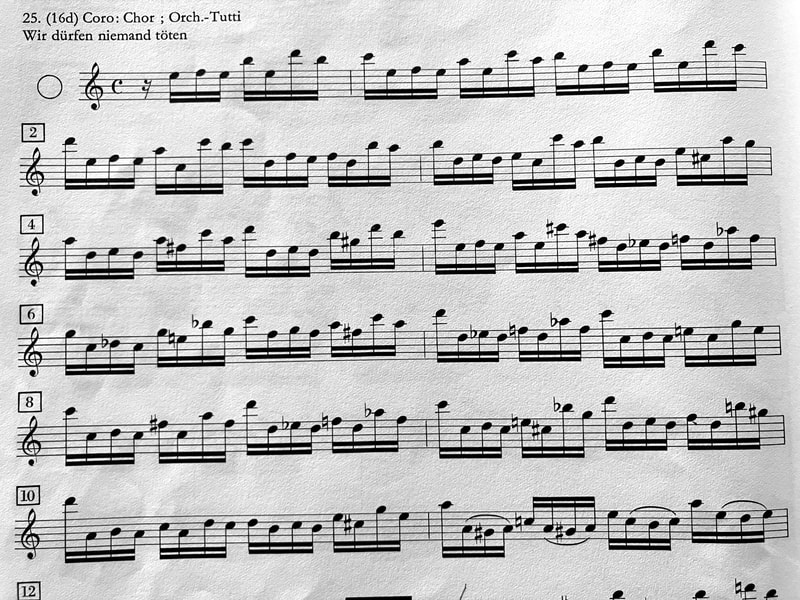|
Easter Season is in full swing and that means playing passions in Germany. This season I've got only J.S. Bach's St. John Passions, which has allowed me to look at the work in closer detail. Compared to the St. Matthew, the St. John is really "action-packed" and has a lot of rewarding passages for the flute. One of which is the famous (or infamous) 16ths which often accompany the crowd scenes in the storyline: I believe amongst flutists, you're either in the camp of finding Nr. 16d (the longest of this kind of passage) really exciting or you loath it. I happen to find it exciting, but then again maybe it's because with the greatest luck so far, I haven't felt challenged by the tempo wished by the conductor (fingers crossed!!!). Listen on YouTube and you'll find a wide range of tempi, as well as tempi differing within the various moments that these 16ths appear in the entire work.
I find it exciting because beyond the fact that the 16ths go on forever, it's such a great moment for getting your sound, breath work, and articulation right in line with each other. In my opinion, I don't think this should be super fast, because it would be such a pity to not be able to hear and be astounded by what incredible harmonies Bach has embedded here. Hence, it should be at a tempo where one could still single tongue, with lots of variety to create a wonderful light and shadow effect. I could easily write many entries about this passage, but let me get to the reason why I wanted to post today, which is about using the alternate B-natural fingering in the second register. It's fingered as such: xoo xxx x Remember that the key closes the hole when we don't press on it. The reason why this popped into my mind is because at our recent Matthew Passion workshop, we talked about how useful this fingering is, especially if one wants to have a very piano B-natural that blends well and is in tune with the others. In this particular passage in the St. John, it's useful because it's similar to the fingering of the neighbor note C-natural, notice how many right-hand notes can stay put between those two fingerings, including going on to the next note D-natural. One aspect about finger technique to keep in mind is that anything involving the 4th finger can be a little challenging. This would be a great spot for the application of that B-natural fingering, and I just discovered it this season! However, understand also that using alternate fingerings is a very personal choice, what works well for one person won't necessarily mean the same for another. There are other times when I prefer to use the regular, perhaps somewhat more cumbersome fingering, because it helps me to slow down and not rush. Mostly, technical problems occur because we rush with our fingers. When making fingering decisions, whatever you decide, make sure you commit to your decision unless you have a very good reason to change it again. Don't confuse your fingers with too many options! What's a favorite alternate fingering you like to use in this passage?
0 Comments
|
ABOUT THE BLOG:I got inspired to document my own observations in flute-playing and music-making. Also, I thought it's important to pass on the teachings of the great Wilbert Hazelzet, as well as many other mentors who have influenced my artistic visions one way or the other. Enjoy this potpourri of tips, inspirations, and musings. TOPICS:
All
👉"Teddie Talks Traverso" on YouTube
WorkshopsTEACHING:I'm specialized in coaching historical and modern flutists. CONTACT ME directly to set up a session, in person or online. Archives
May 2024
|


 RSS Feed
RSS Feed